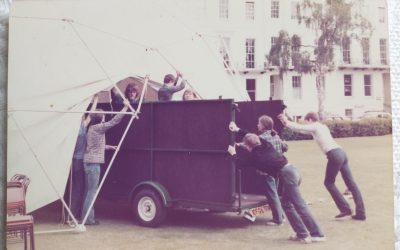I was doing a radio interview the other day about my new book ‘Speaking the Piano.’ While waiting in the studio, I got chatting to the man on duty in reception. I was holding a copy of my book. He asked me what it was about, so I told him it was about learning music.
‘I wish I had learned more about music’, he said. ‘I always wanted to play guitar, but my brother was the only person in the family who had lessons. I really wanted to play a particular song by Coldplay, so I pestered my brother to show me the chords. He showed me and I copied him until I could do them.
‘Over the years he showed me a few more songs I liked. In the end I could play the chords for half a dozen songs, but I never learned any more than that. I never learned to read music.
‘So, apart from those half dozen songs, I can’t play any others. It’s a shame I stopped there,’ he concluded.
‘Did anyone ever tell you what chords they were – like the names of the chords, where they were located within the key of the song?’ I asked.
‘No.’
‘Show you how to read a chart of guitar chords?’
‘No.’
‘That’s a pity’, I said, ‘because with the chords of those six songs you could have played lots of other songs, because many of them use the same chords. You just have to recognise what they are and know how to find them in the right key.’
They say that a little learning is a dangerous thing. Here, a little learning had made someone feel inadequate. If anyone had explained the principles behind the chords, how they were notated, how they were related, how to transpose them into other keys, a whole world of songs would have opened up for this young man. Instead, he had gone for years believing that he could play six songs and no others.
‘You could start again now’, I suggested. He gave me the doubtful look with which I’ve become very familiar when I suggest to adults that they could take up the musical instrument they abandoned in their teens. ‘I suppose I could’, he said politely.
Please! Let’s teach children properly about music while they are still at school!




Loving your book. Raced through the first half drinking in all your advice. Second half – my favourite is the the clapping rhythms. Haven’t quite finished yet.
Fiona, thank you so much. I’m particularly pleased with your comment about the ‘
clapping rhythms’ because nobody else has commented to me about my flamenco chapter yet! So glad you enjoyed it, and thank you for telling me.
Teach children while they are at the ‘sponge’ stage, soaking up everything! Music reading can be acquired step by step at a very young age. (And you were absolutely right to encourage the man in reception to consider starting to learn at whatever age…stimulate the brain and boost confidence!
All that was needed was for him to be steered toward some guitar chord songbooks. This is a type of music book which presents the lyrics with chord names written over the words and at the head of the page the chord shapes you need for that song. It was devised in the late 1980s for people who didn’t read music. I transcribed three dozen of them, including the complete Beatles. That would have given him many more songs and helped develop his technique.
Yes, Rikki, you’re right, and I can only think that this particular person never came across any of those books. This is a small example of a much bigger problem in education – people have to be introduced to things in the first place!